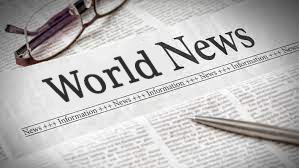



It marked the first time the country had tested a banned ICBM since 2017.
ICBMs are long-range missiles, capable of reaching the US. N Korea is banned from testing them and has been heavily sanctioned for doing so before.
State media said leader Kim Jong-un directly guided the test and the weapon was key to deterring nuclear war.
The Hwasong-17 ICBM was first unveiled in 2020 at a military parade where its "colossal" size surprised even seasoned analysts of the country's arsenal.
Ankit Panda from the Carnegie Endowment for International Peace called Thursday's launch a "significant milestone" for North Korea's nuclear arsenal.
"This test was long telegraphed and continues North Korea's efforts to improve its nuclear deterrent," he told the BBC.
"It is the largest missile in North Korea's inventory and may one day carry multiple warheads."
The missile launch was tracked by militaries in Japan and South Korea - Japanese officials said it flew 1,100 km (684 miles) and fell in Japanese waters after flying for more than an hour.
It came after a flurry of missile tests in recent weeks, some of which the US and South Korea said were in fact parts of an ICBM system. Pyongyang claimed these were satellite launches at the time.
The ICBM test is being seen as a major escalation by the North and has been condemned by the UN, its neighbours and the US.
UN Secretary General Antonio Guterres called the launch "a significant escalation of tensions in the region", while South Korean president Moon Jae-in said it was a "breach of the suspension of intercontinental ballistic missile launches promised by Chairman Kim Jong-un to the international community".
After the launch, state media quoted Mr Kim as saying that the country was preparing for a long confrontation with US imperialism.
-- Courtesy of BBC News